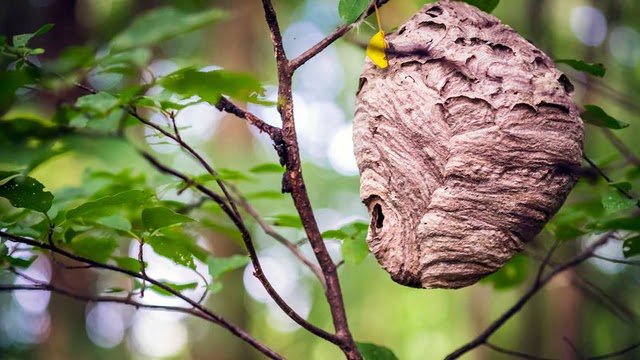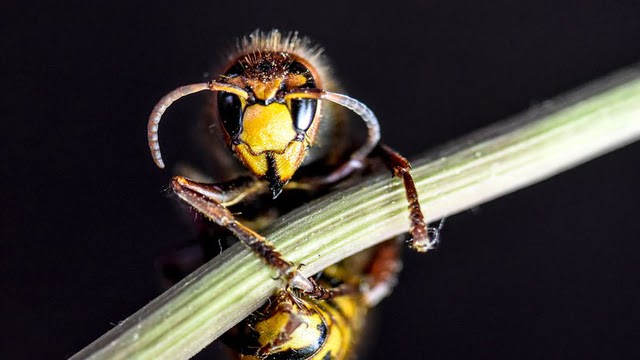Quck answer
Hornets and wasps are both members of the Vespidae family of insects, but there are some key differences between the two. Hornets are larger and more aggressive than wasps, with a more painful sting. Hornets also have a wider head and a more rounded abdomen, while wasps have a more elongated body shape. Additionally, hornets tend to build their nests higher off the ground, while wasps build nests in a variety of locations. Overall, hornets are generally considered to be more dangerous than wasps due to their size and aggressive behavior.
Wild Animals

It’s important to understand the distinction between hornets and wasps. While all hornets are wasps, not all wasps are hornets. Knowing the difference can help when it comes to pest control and avoiding painful stings from beneficial species.
Hornet vs Wasp

According to Jason Gibbs, an assistant professor of entomology at the University of Manitoba, hornets are simply a type of wasp. There are over 100,000 species of wasps in the world, each with unique lifestyles. Wasps can be identified by their black and yellow stripes, a narrow waist, and tapered abdomens. Hornets tend to be larger and chubbier than wasps, with some having white and black markings instead of yellow and black stripes. Hornets can also carry more venom, making them more dangerous in some cases. However, some species of wasps are considered the most aggressive stinging insects.
If left alone, hornets and wasps generally won’t bother humans.
Distinguishing Between Wasp and Hornet Nests

The size and structure of the nest is the main difference between hornet and wasp nests. Both build their nests with chewed wood fibers and saliva. A hornet’s nest is teardrop-shaped, about the size of a basketball, and has hexagonal combs with one entrance. Wasp nests are typically grayish-brown and spherical in shape, starting small but growing to the size of a football or larger. Wasp nests can be found hanging from horizontal surfaces such as roof eaves and garage ceilings, while hornets prefer to build their nests in tree branches. Some hornets, such as the giant European hornet, even burrow into the ground to create their nests.
Wasps Pollinate and Have a Sweet Tooth

The European hornet, which is the only true hornet in the US, was captured feasting on a sugary apple. thatmacroguy / Shutterstock
Wasps are vital pollinators like honey bees and play a significant role in maintaining plant life and agriculture. In addition to this, they also feed on harmful flies and caterpillars, making them beneficial for humans. Due to their importance, some countries such as Germany prohibit disturbing wasps or their nests.
According to Gibbs, “Hornets, like most wasps, are predators and scavengers.” By scavengers, Gibbs means that wasps have an insatiable appetite for sugary food and drinks. Wasps are usually unwelcome guests at outdoor gatherings, like picnics or sports events, as they are attracted to sugary foods and drinks, and can be a nuisance.
In the fall, wasps love to gorge themselves on rotting fruit, which can cause them to become drunk and aggressive, often chasing pets and people to sting repeatedly if they feel threatened or annoyed. As their natural food sources start to dwindle, wasps may become even more daring and sting multiple times, so it’s best to limit their access to human foods to keep everyone safe.
Although hornets may eat fruit or picnic food, they usually feed on insects like crickets and grasshoppers.
Wasps Can Be Solitary or Social Insects

There are over 100,000 known species of wasps, including this hornet, which is just one subspecies of wasps. Julien Dubois/Getty Images
Wasps are categorized into two types: social and solitary species. Eusocial wasps, such as paper wasps, yellow jackets, and hornets, live in groups with a queen and cooperatively care for their young. They are very social.
The majority of wasp species are solitary wasps. The females live alone and reproduce using unique techniques like laying eggs on other insects, such as spiders, whom they paralyze and keep hostage in their own nests. Eventually, the hosts are killed, and their corpses serve as food for wasp larvae.
Social wasps, on the other hand, live in large colonies with an egg-laying queen and sterile workers who do not reproduce. Wasps and bees have evolved social behavior more often than any other group of animals and have lost it many times as well. Eusocial behavior has evolved multiple times in the animal kingdom, making it incredibly complex and fascinating. Even sweat bees, which are Gibbs’ area of expertise, have eusocial and solitary nests within the same species.
Yellow jackets are another type of social wasp that builds underground nests with hundreds of wasps. They are smaller and often mistaken for bees. As their ground nests expand, the soil becomes looser and creates a sinkhole. Stepping into one of these sinkholes could mean being attacked by hundreds of angry, stinging insects.
The bald faced hornet is another example of a eusocial wasp. These hornets have white markings on their face and are very protective of their nest. If they feel threatened, the workers will sting repeatedly.
Avoiding Wasp and Hornet Stings

The bald faced hornet is known for its aggressive behavior and will defend its nest at any cost. Solitary wasps, such as mud daubers, are less likely to sting even if their nests are disturbed. Eusocial wasps and hornets, on the other hand, can be extremely aggressive and swarm intruders when threatened. Swatting at wasps is not recommended as it can trigger them to release pheromones and signal for an attack. One wasp sting can be painful, and multiple stings can cause serious harm, especially for those allergic to the venom. The best way to prevent a wasp sting is to keep food covered outdoors, especially sugary drinks. If a wasp flies near, remain calm, as it will likely fly away. If a swarm approaches, run in a straight line without waving your arms.
Interesting fact: The Asian giant hornet, also known as the “murder hornet,” is the world’s largest hornet. It is native to Asia and has recently been the target of eradication efforts in Washington state and British Columbia, Canada.
Originally Published: Oct 8, 2019
FAQ
1. What is a hornet and what is a wasp?
A hornet and a wasp are both flying insects that belong to the Hymenoptera order. Hornets are a type of wasp that are usually larger and have a more painful sting than a regular wasp.
2. How can you tell the difference between a hornet and a wasp?
Hornets are usually larger than wasps and have a more distinct black and white striped pattern on their abdomen. They also have a rounder, more robust body shape than wasps.
3. Are hornets more dangerous than wasps?
While both hornets and wasps can be dangerous and have painful stings, hornets are generally considered to be more aggressive and have a more painful sting. However, it ultimately depends on the species and individual insect.
4. What are some common types of hornets and wasps?
Common types of hornets include the European hornet, Asian hornet, and bald-faced hornet. Common types of wasps include yellow jackets, paper wasps, and mud daubers.
5. Where do hornets and wasps typically build their nests?
Hornets and wasps typically build their nests in sheltered areas such as inside trees, under eaves or porches, or in underground burrows. Some species will also build their nests in man-made structures such as attics or garages.
6. Are hornets and wasps beneficial to the environment?
Yes, hornets and wasps are beneficial to the environment as they help to control populations of other insects such as flies and caterpillars. They also play an important role in pollination.
7. What should you do if you encounter a hornet or wasp?
If you encounter a hornet or wasp, it’s important to remain calm and move away slowly. Do not swat at the insect or make sudden movements as this can provoke it to sting. If you are stung, remove the stinger and apply a cold compress to reduce swelling.
8. How can you prevent a hornet or wasp infestation?
To prevent a hornet or wasp infestation, it’s important to seal any cracks or openings in your home’s exterior to prevent them from entering. Keep garbage cans tightly sealed and clean up any food or drink spills promptly. If you have a problem with hornets or wasps, contact a pest control professional.
9. Can hornets and wasps be controlled without harming them?
Yes, hornets and wasps can be controlled without harming them by using natural remedies such as peppermint oil, vinegar, or soap and water. However, for severe infestations, it may be necessary to use chemical control methods.





Leave a Reply